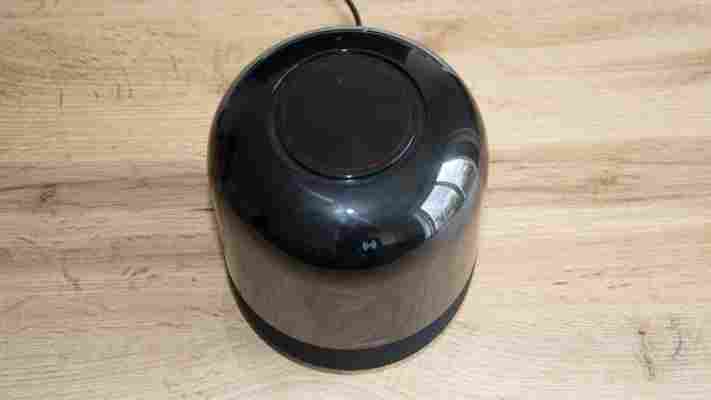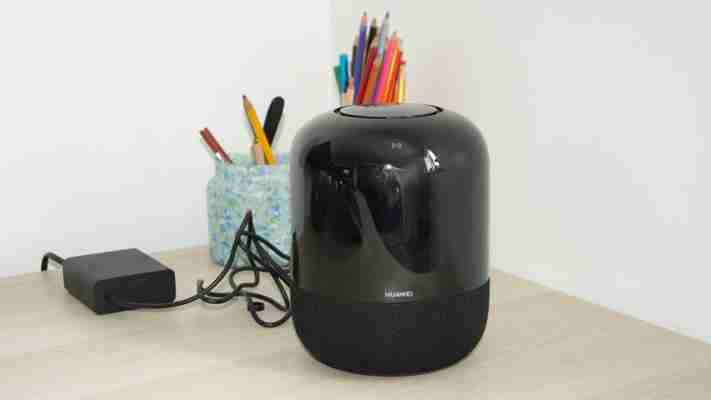Huawei Sound review: A sound investment?
Posted in Angelcityfurniture
Created in collaboration with French amplifier and speaker manufacturer Devialet, the Huawei Sound is a smaller, stripped-back version of the Sound X , which my colleague Ed Munn went hands-on with in February 2020 .
It primarily functions as a Bluetooth speaker but can also connect to Wi-Fi networks. Don’t be fooled into thinking this is a wireless smart speaker, however. It doesn’t support the use of a voice assistant outside of China.
Like the Sound X, the Huawei Sound is a visual treat, and underneath its attractive exterior, Devialet’s technical expertise helps deliver immersive 360-degree sound. Sonically and aesthetically, this is an appealing home speaker.
Buy now from Huawei
Huawei Sound review: What do you get for the money?
The Huawei Sound has a list price of £200 but is currently available for £150. At those prices, it’s in competition with mains-powered, wireless smart speakers such as Amazon’s Echo Studio and the Audio Pro G10 , both of which offer Bluetooth in addition to Wi-Fi connectivity. It’s also going toe to toe with some of the best portable Bluetooth speakers around, including the JBL Charge 5 , B&O Beosound A1 (2nd Gen) and Sonos Roam .
The Huawei Sound requires mains power to operate, which means you’re a little limited in where you can position it and won’t be able to use it outdoors unless you have access to a mains socket.
A power adapter is included in the box, along with a cable to plug into the mains. This connects to a port on the underside of the speaker, while the cable clips into a small groove to ensure it’s neatly tucked away, which is a nice touch.
The speaker itself is 187mm tall, 147mm in diameter and weighs 2.2kg. That’s a fair bit lighter than the Sound X, which weighs 2.9kg and is a couple of centimetres taller and wider. The upper section of the Sound has a reflective coating, which gives it a rather futuristic appearance, while a fibre grid cloth encases the bottom quarter of the speaker's housing. Huawei says it's both dust- and splash-resistant, though there’s no IP rating stated.

It’s a striking design and one I like a lot, although the reflective surface picks up dust and fingerprints very quickly. There’s a cleaning cloth included in the box but I found myself having to use it more than I’d have liked.
The area that most frequently required a wipe down was the circular touch control panel on the speaker’s top plate. It has four button indicators positioned at 12, 3, 6 and 9 o’clock which illuminate when your hand gets within a few centimetres of the interface.
READ NEXT: The best smart speakers on the market
There’s a mute button (you can also mute/unmute by covering the entire panel with your hand), plus buttons for increasing and decreasing volume, and a multi-function button, which is used for pairing. The controls are simple and work well, although there’s no way to skip tracks – you’ll need to use your phone for that.
The touch panel uses RGB lighting around its circumference to reflects the volume level. Each press of the volume up button causes the outline of the circle to inch clockwise with a smidge more colour, while the whole ring is illuminated red when the speaker is muted.
When streaming content over Bluetooth 5.0, the speaker defaults to Sony’s LDAC codec on most modern Android devices, and AAC for iOS devices. The incorporation of LDAC support is very welcome as it allows for high resolution streaming at up to 990kbps from devices that support it.
The Sound can also be hooked up to Wi-Fi networks (802.11ac), although the benefits of this are limited. Outside China, you can’t take advantage of the UPnP feature, which allows for wireless audio casting, or use a virtual assistant to execute voice commands. You can, however, plug an external device into the 3.5mm port located under a small flap on the rear speaker, increasing the physical connection options you have at your disposal.
One of the Sound’s niftier features is quick audio sharing via Huawei’s OneHop technology. If you own an NFC-enabled smartphone running Android 5.1.1 or above, you can simply tap your phone on an icon located on the front edge of the speaker to switch outputs from the phone to the Sound. Tapping again swaps you back to your phone’s output, and I found the feature worked consistently well.
Buy now from Huawei
Huawei Sound review: How does it sound?
The Huawei Sound is Hi-Res audio certified, covers a frequency range of 50Hz to 40kHz and delivers those frequencies via a 4in woofer capable of outputting 40W, plus two passive radiators and three 5W tweeters.
It’s the placement of those tweeters and the inclusion of some clever Devialet technologies that make the Huawei Sound particularly interesting. The tweeters are positioned at 120-degree angles relative to each other, allowing the speaker to deliver a 360-degree soundstage no matter where it’s placed.
READ NEXT: The best budget soundbars
The woofer and passive radiators are powered by Devialet’s patented Speaker Active Matching (SAM) technology. This digital signal processing tech works by adjusting audio signals in real time so the acoustic pressure created by the speaker matches that of the original source. The signal adjustment takes into account the exact specifications of the speaker (which has been analysed by Devialet) and enables it to reproduce lower frequencies, which results in a wider soundstage and greater fidelity when articulating audio recordings.
Additionally, the passive radiators are installed in a “push-push” configuration, which helps minimise vibration and distortion as the forces exerted by each component effectively cancel each other out. The setup works nicely: bass is deep and clean, and even at maximum volume – which is very loud – the speaker cabinet demonstrates very little movement, and low-end reproduction remains crisp.

It's impossible to say exactly how much of an impact the SAM technology has on the Sound’s audio quality, but I was certainly impressed by the speaker's overall output. There’s real depth and richness to low-end frequencies, while trebles are reproduced with clarity. The mid-range isn’t quite as impressive, however. Instrument separation in complex arrangements could certainly be better.
The Sound offers three audio profiles to choose from: Hi-Fi, Voice and Devialet SPACE Soundstage, and you can switch freely between them using the Huawei AI Life app. I found that Hi-Fi was the best-sounding by some margin. The soundstage is nice and wide and the aforementioned bass response makes the speaker a particularly enjoyable listen if you’re into genres featuring weighty low-end.
READ NEXT: Our favourite desktop speakers to pair with your PC
Voice mode does what it says on the tin, pushing vocals forward in the audio mix for improved clarity. It works well enough and is useful if you’ve got a podcast on, but it isn’t as well balanced as the Hi-Fi profile for general listening.
The third and final audio profile – Devialet SPACE Soundstage – promises a lot but ultimately fell short of my expectations. It seeks to create a surround-sound-like experience that takes into account the position of the listener relative to the speaker. It’s meant to make you feel as if you’re right there in the room with the musicians as the music is being played. However, I found audio sounded rather constricted in this mode. At higher volumes, the mode does feel slightly more enveloping than the Hi-Fi option, but the latter is crisper and more impactful.
Along with the three EQ modes, the AI Life app gives you the opportunity to increase or decrease bass by up to 6dB. I didn’t find myself needing to do this very often, but it’s nice to have the option available.
Buy now from Huawei
Huawei Sound review: Should you buy it?
The Huawei Sound is an attractive home speaker that delivers bass and vocals delightfully. It’s an engaging listen across most genres, has the power to fill a living room with ease, and quick audio sharing via OneHop is a handy inclusion.
Were it to support the use of voice assistants outside of China and wireless streaming via AirPlay and the like, it would be a force to be reckoned with and far easier to recommend.
As it is, most people will be better served by Bluetooth speakers such as the JBL Charge 5 and B&O Beosound A1 (2nd Gen) , which are both portable and waterproof. Similarly, those with £200 to spend on a home speaker for indoor use will find options providing more complete feature sets on our best wireless speakers and best smart speakers pages.